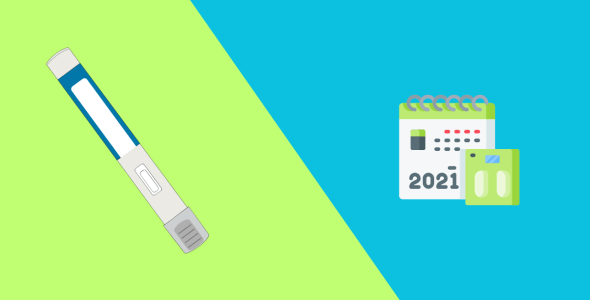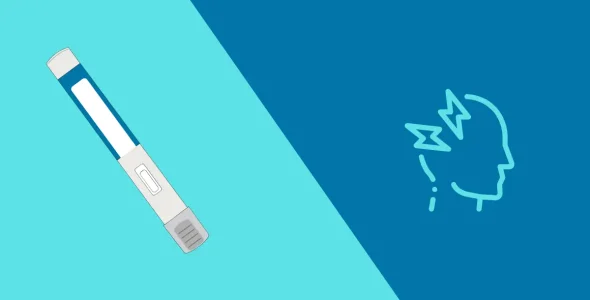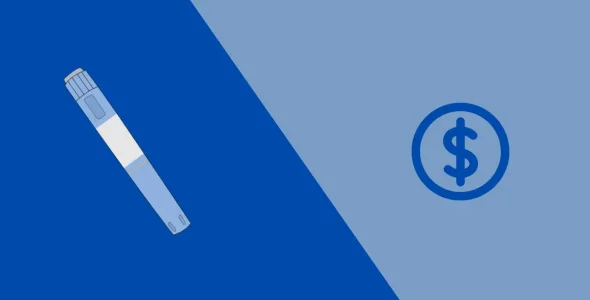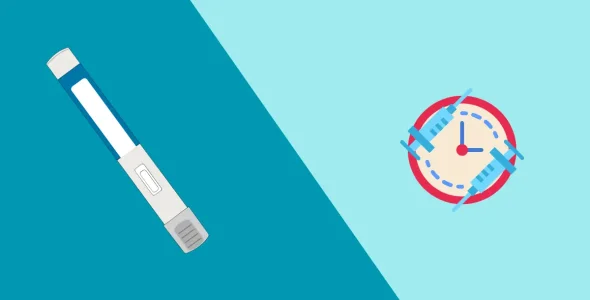Semaglutide and heartburn: How common it is, why it happens, and what you can do
If heartburn is the unwanted side effect of your semaglutide journey, you're not alone. The good news? You don't have to just suffer through it. Understanding the 'why' is your first step toward mastering the 'how' to make it stop.
Key highlights
- Heartburn is a potential side effect of semaglutide (Ozempic and Wegovy) that typically occurs when you start treatment or increase the dose during the titration phase. It is usually transient and subsides over time.
- Semaglutide slows digestion and delays stomach emptying, which causes back flushing of gastric content into the esophagus and throat, leading to heartburn.
- In clinical trials, approximately 1.9% of patients taking Ozempic and 5% of those using Wegovy experienced gastroesophageal reflux disease (GERD).
- Generally, heartburn diminishes within a few days to a few weeks. Dietary modifications, physical activity, over-the-counter medications, and dose adjustments can help relieve it more quickly.
- If you experience heartburn, do not discontinue semaglutide immediately. Consult your doctor for dose adjustments and personalized guidance to manage this side effect.
Heartburn and acid reflux are possible side effects of semaglutide medications like Ozempic® and Wegovy®, but they are not the most common.
Manufactured by Novo Nordisk, semaglutide is a GLP-1 agonist (glucagon-like peptide-1) that comes in three brand names: Ozempic, Wegovy, and Rybelsus. The medication has heartburn or acid reflux as a possible side effect in its prescribing information.
Clinical trials of Ozempic demonstrate that gastroesophageal reflux disease occurred in 1.9% of patients taking 0.5 mg Ozempic and 1.5% of those taking 1 mg Ozempic compared to 0% with placebo. Wegovy showed a greater incidence of gastrointestinal side effects. Approximately 5% of patients using Wegovy (2.4 mg) experienced gastroesophageal reflux disease compared to 3% of the placebo group.
Semaglutide works by slowing gastric emptying. The medication relaxes stomach muscles, which slows the rate at which food moves from the stomach to the intestines. A prolonged stay of food in the stomach can cause heartburn and a backflow, which can lead to heartburn and gastroesophageal reflux disease.
If you are currently taking semaglutide and experiencing heartburn or planning to start semaglutide, you might wonder how common semaglutide heartburn is and if there is any way to prevent it. This article explains the simple science behind why this happens and provides a clear, actionable plan with eight proven strategies to manage and prevent heartburn, allowing you to continue your journey toward better health with greater comfort.
What does heartburn on semaglutide mean?
Heartburn is the burning sensation in the mid chest and upper abdomen, which is caused by back flushing of stomach acid content into the esophagus. This leads to gastroesophageal reflux disease or GERD. You may also experience a burning sensation in the throat and bitter tastes in your mouth due to backflow of gastric content.
Symptoms of GERD are belching, burning in the chest and upper abdomen, bloating, and a feeling of fullness. Patients using semaglutide may experience worsening of these symptoms if they have pre-existing GERD.
Why does semaglutide cause that burning feeling?
Semaglutide is an FDA-approved medication that is used to regulate blood sugar levels in type 2 diabetes and promote weight loss in patients with obesity and overweight, when used in combination with lifestyle changes. The medication suppresses appetite in various ways to reduce calorie intake. Delayed gastric emptying is one of the mechanisms by which semaglutide promotes a feeling of fullness and reduces food intake. The medication slows down the rate at which food leaves your stomach. While this helps you feel full longer and regulates blood sugar, it can also give stomach acid more time to ‘splash back’ up into your esophagus, which causes heartburn or acid reflux.
If you are currently on semaglutide and experiencing heartburn, there is no need to worry. Heartburn is a sign that the medication is working in the gut. It does not indicate any serious issue. For most patients, this side effect diminishes on its own over time as their body adjusts. Dietary modifications can also help relieve it.
Delayed gastric emptying (slower stomach emptying)
Semaglutide delays or slows the movement of food from the stomach to the small intestine. A clinical study shows that semaglutide increased gastric content retention by approximately 3.5% at 1 hour, 25.5% at 2 hours, 38% at 3 hours, and 30% at 4 hours compared to 0% retention with the placebo. The medication significantly increases gastric emptying even after long periods of fasting. Slow digestion can cause a feeling of fullness, early satiety, bloating, and belching, which can reduce caloric intake and aid in weight management.
Prolonged stay of food in the stomach provokes gastric acid reflux, which causes heartburn.
Nausea/vomiting and belching
Nausea and vomiting are common side effects of semaglutide. Clinical data show that 15.8% of patients taking Ozempic 0.5 mg and 20.3% of patients using Ozempic 1 mg experienced nausea, compared to 6% in the placebo group. Similarly, 5% and 9.2% of patients experienced vomiting with 0.5 and 1 mg doses of semaglutide. In comparison, only 2.3% of patients experienced vomiting in the placebo group.
These results show that nausea and vomiting are common with semaglutide. They usually occur during the initial treatment stage or when you increase the dose of medication. Vomiting forces the retrograde (backward) movement of gastric contents. These symptoms themselves can irritate the walls of the esophagus due to constant exposure to gastric acid and provoke gastroesophageal reflux. Additionally, vomiting can also cause dehydration and acute kidney injury.
Belching can increase intra-abdominal pressure and transiently relax the lower esophageal sphincter, potentially worsening acid reflux.
Weight loss-related anatomy changes
Weight loss can alter the anatomical structure of the gastroesophageal junction (the junction that connects the esophagus and stomach), hiatus, and supporting ligaments. The shift in anatomical relationships of these structures can loosen supporting ligaments and make the stomach more mobile, which can lead to acid reflux.
If you already have GERD or a hiatal hernia, semaglutide may worsen your symptoms. It is better to consult with your doctor and discuss these problems before starting semaglutide or other GLP-1 receptor agonists.
Recognizing semaglutide-related heartburn symptoms
Heartburn occurs when gastric content (which is acidic) flows upwards and backwards into the esophagus. This back flushing causes irritation, discomfort, and a burning sensation.
Common symptoms
The common symptoms of heartburn are:
- A burning sensation in the chest or upper abdomen that usually starts or worsens after meals or at night
- Indigestion and abdominal discomfort
- A sour taste in the throat and mouth
- Belching or the feeling of acidic food flowing up into the throat
- Chest discomfort that worsens when lying down or bending forward
Related gastrointestinal issues
As semaglutide delays digestion, heartburn can appear with related gastrointestinal (GI) side effects. These include the following:
- Nausea and vomiting (these are common during the first few weeks of starting the medication or when you escalate the dose during the titration phase)
- Bloating
- Feeling of fullness or early satiety
- Stomach ache
- Constipation
- Diarrhea (less common)
These effects indicate that the medication has started working. There is nothing to worry about, as these effects tend to diminish over time as your body starts to adapt to the physiological changes. However, if gastroesophageal reflux, vomiting, or chest pain persist, consult your healthcare provider. They will thoroughly assess your condition and adjust the medication dosage accordingly. They may also prescribe some over-the-counter medications to relieve this problem.
When does heartburn start and how long does it last?
Heartburn with semaglutide is usually dose-dependent. It typically occurs or worsens with dose escalation during the early titration phase. Early-onset heartburn and indigestion may persist for several days to weeks. It may worsen with dose increment and settle again within a few days or weeks. Most patients report that heartburn settles when they reach a stable or maintenance dose.
As your body adapts to the changes, the frequency and intensity of heartburn typically decrease.
Consult your doctor if:
- Heartburn persists or is intolerable
- You experience severe nausea, vomiting, and stomachache
- Symptoms worsen over time and do not get relieved with dose adjustments
- Your quality of life is getting disturbed due to consistent heartburn
- You have a history of gastritis, GERD, hiatal hernia, or esophageal diseases
Remember, heartburn and stomach aches with semaglutide are usually transient and subside over time. Always titrate the medication according to your doctor’s advice and increase the dosage slowly to give your body adequate time to adjust. Quickly escalating the dosage or taking higher doses directly can cause serious side effects.
How common is heartburn on semaglutide?
Clinical trial data for Ozempic (semaglutide for diabetes) indicate that 32.7% and 36.4% of patients using Ozempic experienced gastrointestinal side effects with weekly dosages of 0.5 mg and 1 mg, respectively, compared to 15.3% with placebo. Around 3.1 to 3.8% of patients discontinued the treatment due to gastrointestinal side effects. The following were the gastrointestinal side effects related to heartburn with Ozempic (1 mg):
- Dyspepsia 2.7%
- Gastroesophageal reflux disease (GERD): 1.5%
- Gastritis (inflammation of the stomach): 0.4%
The incidence of gastrointestinal side effects is higher with Wegovy (semaglutide for weight loss) as the medication has a higher dosage (2.4 mg) than Ozempic. Clinical trial data show the following side effects related to heartburn:
- Gastroesophageal reflux disease: 5% of Wegovy users, 3% of the placebo group.
- Abdominal pain: 20% of patients using Wegovy and 10% in the placebo group.
- Dyspepsia: 11% of patients in the Wegovy group compared to 3% in the placebo group.
- Gastritis: 4% of Wegovy users experienced gastritis compared to 1% of users in the placebo group.
These are reported percentages from clinical trials. Individual results may vary, depending on dosage, tolerability, and titration schedule.
8 proven tips to manage and prevent heartburn on semaglutide
Heartburn on semaglutide is preventable with a few dietary modifications. The following are proven tips to manage and prevent it:
1. Eat smaller, more frequent meals
Eating in larger portions at once can cause heartburn. As semaglutide delays digestion, large meals can take longer to be digested, which worsens acid reflux. Eat in smaller portions and slowly, but more frequently, to prevent hypoglycemia (low glucose levels) and heartburn. Stop eating before you feel overly full.
2. Identify and avoid trigger foods
Identify which foods trigger heartburn or worsen it. Avoid triggers such as spicy, fatty, greasy, and acidic foods.
If you lie down immediately after eating, heartburn will worsen. Don’t lie down for at least 2–3 hours after eating. It is beneficial to take a brief walk for a few minutes after each meal.
The following are common dietary triggers for heartburn:
- Spicy foods
- Acidic and citrus foods such as tomatoes and citrus fruits
- Fatty foods
- Greasy and fried foods
- Processed foods
- Chocolates
- Caffeine
- Hot beverages
- Carbonated drinks
Keep a simple food log for a week. Note what you eat and when heartburn strikes. You may find that your specific triggers differ from the standard list.
3. Don’t lie down after eating
Avoid lying down for at least two hours after a meal, as lying down immediately after meals can cause gastric content to flush backward into the esophagus, leading to heartburn.
Light physical activity, such as walking, cycling, or doing household chores after meals, can help prevent heartburn. Elevate the head of your bed when you sleep to prevent backflow of food.
4. Time your medications wisely
Taking semaglutide as directed by your healthcare professional can help prevent side effects. You can take the medication with food or without food. For some patients, injecting the medication at a different time of day can make a difference. However, always discuss any change in medication timing with your prescriber first.
5. Incorporate heartburn-friendly foods
Heartburn-friendly foods, such as oatmeal, ginger, non-citrus fruits (melons, celery, and bananas), healthy fats (like avocado and olive oil), lean proteins (such as fish and chicken), and vegetables, can help prevent acid reflux. Additionally, water, herbal teas, and alkaline milk alternatives may also be helpful.
Try a cup of ginger tea after meals or have a banana as a snack. They help naturally soothe the digestive tract and prevent esophageal irritation.
6. Consider over-the-counter (OTC) remedies
Different types of over-the-counter medications (OTC) can be used to treat gastroesophageal reflux disease (GERD) and heartburn. These include the following:
Antacids (Tums, Rolaids)
These medications neutralize stomach acid and provide quick relief. They are suitable for mild and occasional symptoms.
H2 Blockers (Pepcid AC, Zantac)
H2 blockers reduce gastric acid production by blocking the release of histamine. Decreased stomach acid production alleviates symptoms of GERD and heartburn and provides longer-lasting relief.
Proton Pump Inhibitors (Prilosec OTC, Nexium)
Proton pump inhibitors inhibit stomach acid production by inhibiting the proton pump (H⁺/K⁺ ATPase pump). These are used for more frequent or severe heartburn, and they block acid production more powerfully compared to others.
Always talk to your doctor or pharmacist before starting a new OTC medication to ensure it doesn’t interact with your other health conditions or medications.
7. Wear loose-fitting clothing
Clothes with tight-fitting material around the abdomen or tight waistbands can exert pressure on the abdomen, forcing the movement of gastric contents upward into the esophagus.
Wear loose-fitting clothes to stay comfortable and avoid heartburn.
8. Talk to your prescriber before changing medications
Do not make any changes to the semaglutide dosing schedule on your own without consulting a licensed doctor. If you experience heartburn, consult with your doctor. They may pause dose escalation for a few weeks, reduce the dosage, or switch to a different medication (if necessary).
When to call your doctor (red flags)
Mild heartburn or acid reflux are common with semaglutide, but these are usually short-lived side effects that subside over time. However, some symptoms may require immediate medical attention as they can cause more serious diseases or adverse events that need professional evaluation.
Seek medical care immediately and do not administer the next dose before consulting your doctor in the following cases:
- If you have severe, persistent, or worsening pain in the upper abdomen that is radiating to the back and is associated with nausea and vomiting, it can be due to pancreatitis (inflammation of the pancreas).
- If you have chest pain that feels like stabbing pain, associated with shortness of breath, and the pain is radiating to the jaw, left shoulder, and left arm, this can be due to heart-related causes such as myocardial infarction.
- If you experience difficulty or pain when swallowing food, it can be due to problems in the esophagus, such as esophageal stricture and achalasia.
- If your vomitus contains blood, immediately rush to the hospital. Blood in the vomitus indicates perforation in the stomach wall or liver issues.
- When you experience unintentional or rapid weight loss that is not related to the intended effects of therapy, consult your doctor to find out the cause of the weight loss.
- If heartburn or acid reflux symptoms persist beyond 2–4 weeks despite making dietary changes, adequate hydration, and conservative care, discuss with your doctor to change the dosage or switch medication to another GLP-1 agonist.
- In case of difficulty swallowing or a mass in the thyroid, consult your doctor, as semaglutide is contraindicated in patients with thyroid tumors or those with personal or family history of thyroid cancer.
- If you experience yellowing of the skin or eyes (jaundice), dark urine, or fever, these symptoms may indicate issues with the liver or gallbladder.
- Immediately visit a nearby healthcare facility if you experience any signs of an allergic reaction, such as a rash, hives, swelling of the lips, eyes, tongue, and throat, shortness of breath, or severe dizziness. An allergic reaction is a medical emergency that needs immediate medical care.
If heartburn and gastrointestinal issues persist or worsen over time, your doctor will adjust the dose of Ozempic and Wegovy. They may advise you to temporarily lower the semaglutide dose or administer the previously tolerable dose for the next 4 weeks. They may also recommend over-the-counter medications, such as proton pump inhibitors, H2 Blockers, and antacids, to manage stomach pain and heartburn. Additionally, dietary modifications are also helpful in managing these problems.
Do not try to change the dose or stop semaglutide on your own. Always consult your healthcare provider to manage side effects and make a safe and effective treatment plan.
What the drug label says
Drug labels provided by the U.S. Food and Drug Administration (FDA) list heartburn, indigestion, gastroparesis, dyspepsia, and abdominal pain as possible side effects of Ozempic and Wegovy, and recommend consulting with a healthcare provider if side effects persist.
Semaglutide heartburn FAQs
How long does semaglutide heartburn last?
Semaglutide heartburn may last for a few days to weeks. It typically subsides on its own as the body adjusts to the changes. However, it depends on your body’s tolerance, dosage of the medication, and dietary habits. Heartburn can come back with dose increments. Additionally, consuming fried, processed, spicy, salty, and greasy foods, as well as hot beverages, may prolong heartburn. It may subside more quickly if you consume healthy foods.
Does heartburn mean the medication is working?
Yes, heartburn means the medication is working. It has slowed down digestion to suppress your appetite and regulate blood sugar levels.
Can I just stop taking semaglutide if the heartburn is bad?
No, you cannot stop taking semaglutide on your own. Typically, heartburn is a temporary condition that subsides on its own over time. If you have severe or intolerable heartburn, consult your doctor. They may lower the dose of semaglutide to manage it. If the condition persists after dose adjustments, your doctor will switch to another medication that is suitable for you and well-tolerated.
Is heartburn a common reason to stop semaglutide?
No, heartburn alone is not a common reason to stop semaglutide. It is a possible side effect of this medication, but not a common one. Patients discontinue semaglutide due to various gastrointestinal side effects such as nausea, vomiting, diarrhea, and constipation.
Is heartburn more common on Wegovy than Ozempic?
Yes, heartburn is more common with Wegovy than Ozempic. Heartburn occurs in a dose-dependent manner. Wegovy has a higher dose (2.4 mg weekly) than Ozempic (2 mg weekly), which contributes to a greater incidence of heartburn.
In clinical trials of Ozempic, 1.9% of patients experienced heartburn with Ozempic 1 mg. In comparison, 5% of patients experienced heartburn with Wegovy 2.4 mg in clinical trials.
Can antacids interfere with semaglutide?
There is no evidence of direct interference between antacids and semaglutide.
Is there a difference in heartburn between Ozempic, Wegovy, and Rybelsus?
Symptoms of heartburn are the same with all medications, but Wegovy has a higher risk of gastrointestinal side effects, including heartburn and GERD, due to its higher dose compared to Ozempic and Rybelsus.
Conclusion: Understanding heartburn on semaglutide and how to manage and prevent it
Heartburn can occur with semaglutide, but it is not the most common side effect. Only a small percentage of patients experience it during the initial phases and after dose escalation. Heartburn with semaglutide is transient and usually subsides over time. However, over-the-counter medications and dietary modifications are also helpful in managing heartburn while on semaglutide.
If you are taking semaglutide and experiencing heartburn, there is no need to worry. Consult your doctor and maintain open communication with them to find the right solutions for managing these side effects and achieving your long-term health goals. They will make necessary dose adjustments or switch the medication, if needed.






